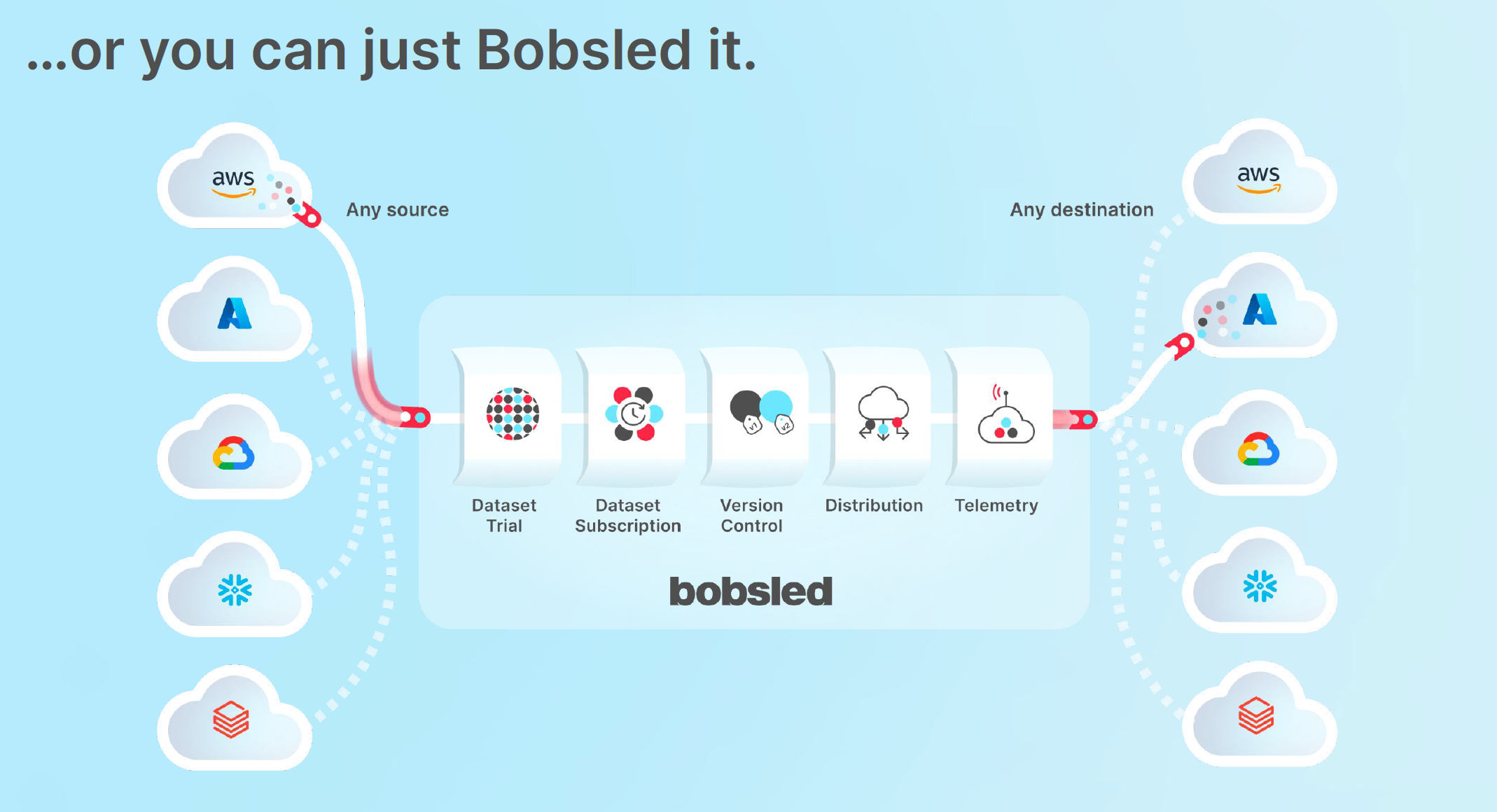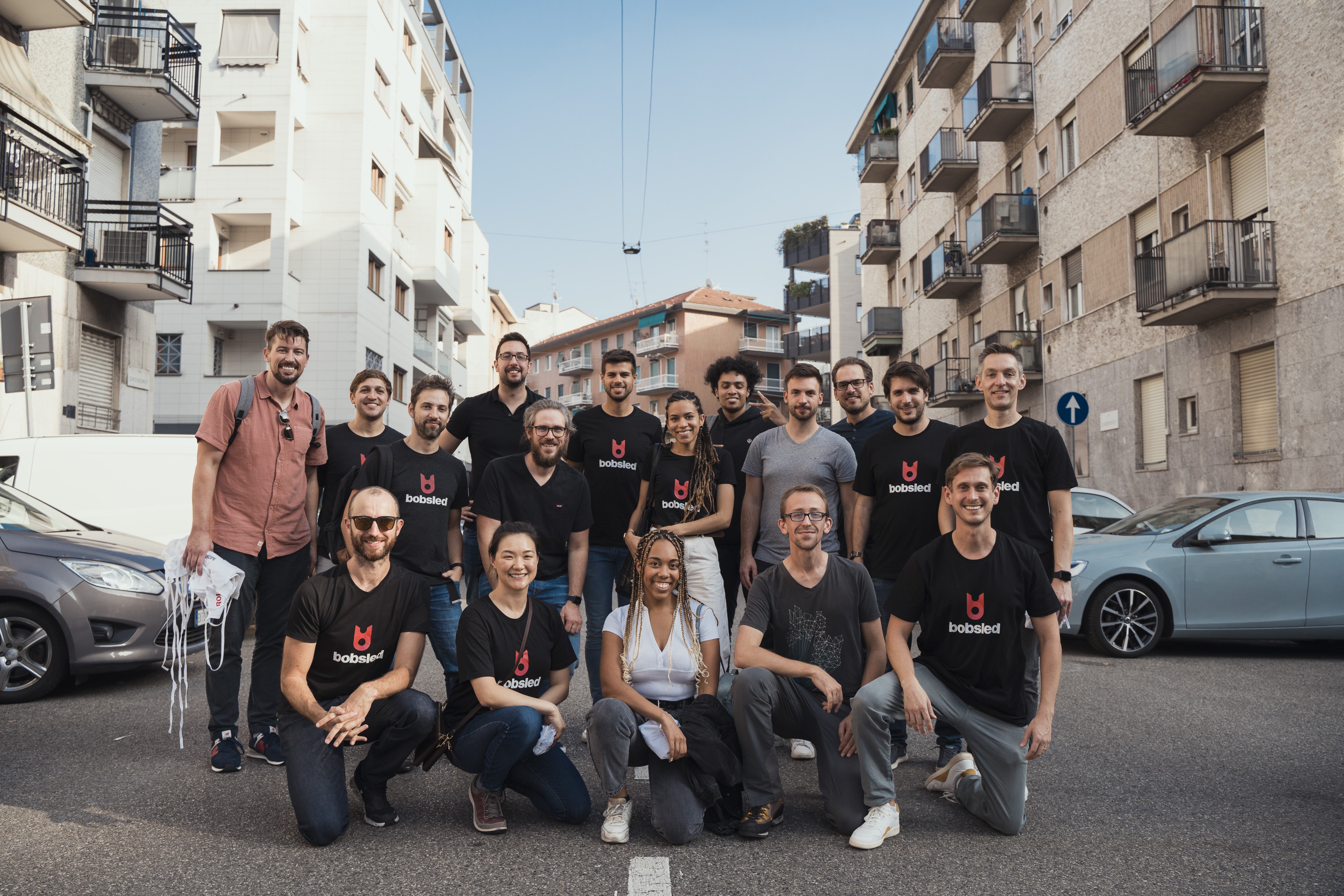Bobsled, a startup that is building a cross-cloud data sharing platform, today announced that it has raised a $17 million Series A funding round co-led by Greycroft and Madrona Venture Group. This round follows a $7 million seed round led by .406 Ventures. In this most recent round, Bobsled’s valuation was $87 million.
Prior to founding Bobsled in late 2021, the company’s CEO and co-founder Jake Graham was a principal product manager at Microsoft Azure, working on the Azure Data Exchange. Graham, who also previously worked at Neo4j and Intel, believes that data sharing is going to be a fundamental change in the analytics landscape.
“It’s the next evolution of how companies actually get access to the data that they need to drive machine learning analytics, data science, what have you,” he said. “I’ve been building in the data infrastructure space for about a decade and that APIs and SFTP were the way in which data moved was just one of those things that I accepted. It wasn’t until I really started digging into it that I was: it shouldn’t be. This doesn’t make a lot of sense. These are built for a previous paradigm of data.”

Graham also believes that it’s important for the clouds and data platform to create the building blocks of what a native sharing protocol should look like.
“If you believe that data sharing is the way the world is going to go and that there’s going to be much more active collaboration on data between source and destination, you kind of need there to be something that brings all of these different platforms together, because there’s not one right cloud, there’s not one right data warehouse, there’s not one right layer of the stack for it to make data sharing happen,” he said.
Bobsled, unsurprisingly, believes that it can be this neural, third-party data sharing platform that can allow businesses to connect their various data sources in a more native way. The service uses each platform’s sharing protocol and then connects the various sources and helps businesses prepare the datasets for querying them.

Some of the common use cases here are SaaS applications that may want to share application data from AWS S3 into a customer’s Azure storage, for example, or a data team that wants to move sales data from Azure to S3 for analysis.
Obviously, there are other companies that focus on this kind of data transfer and data transformation space. But Graham believes that with these ELT platforms like Fivetran, the consumer still has to do too much work. “A lot of what actually is being done by ELT platforms should be done by the source of the data,” he said. “So we’re shifting left a lot of that. If you pull apart the letters, extract: you’re doing that because it’s not being shared with you. Load? Same thing. If you’re getting a share within Databricks, you’re not loading into anything.” As for transforming data, he noted that most of the time, the data is in a transactional data model that needs to be formatted for analysis and the source should transform that data — though he believes that transforming the data from multiple data sources to match a given scheme is always going to be up to the consumer.
“I wouldn’t call us directly an ELT product yet because we’re different enough, but I think that’s the closest thing to the category that we’re building. It’s just a different user,” Graham explained.
The company plans to use the new funding to build out its platform, mostly with a focus on support for more data sources (including old-school SFTP sources).
“The promise of AI only heightens the urgency and increases the priority for companies to realize the value of their data,” said Madrona Managing Director S. Somasegar. “Even within enterprises and amongst partners, that data is now spread across platforms not designed to work together. Bobsled‘s unique cross-cloud data sharing focus will unlock the value of data that has been complex, slow and expensive to access until now.”







